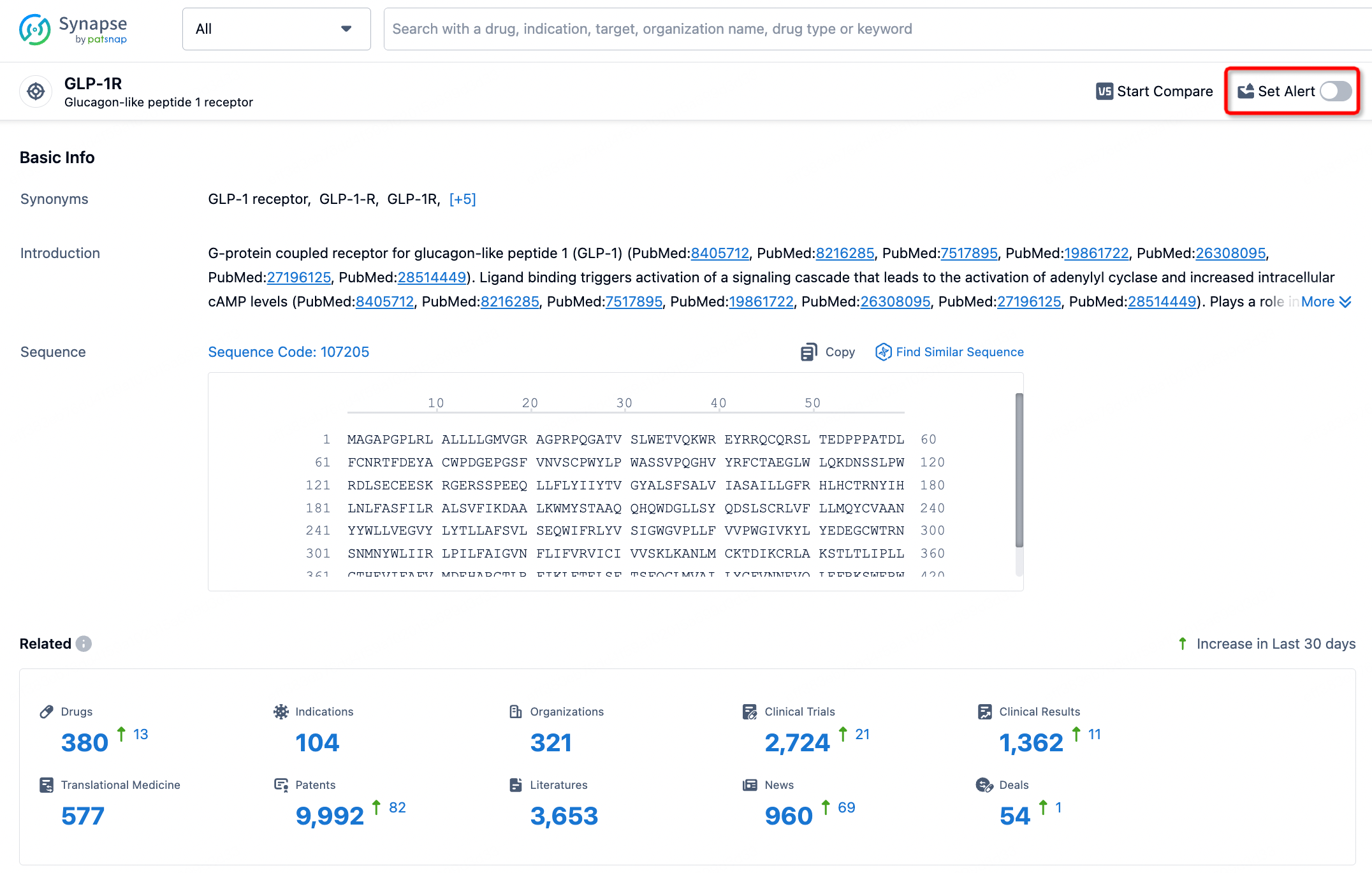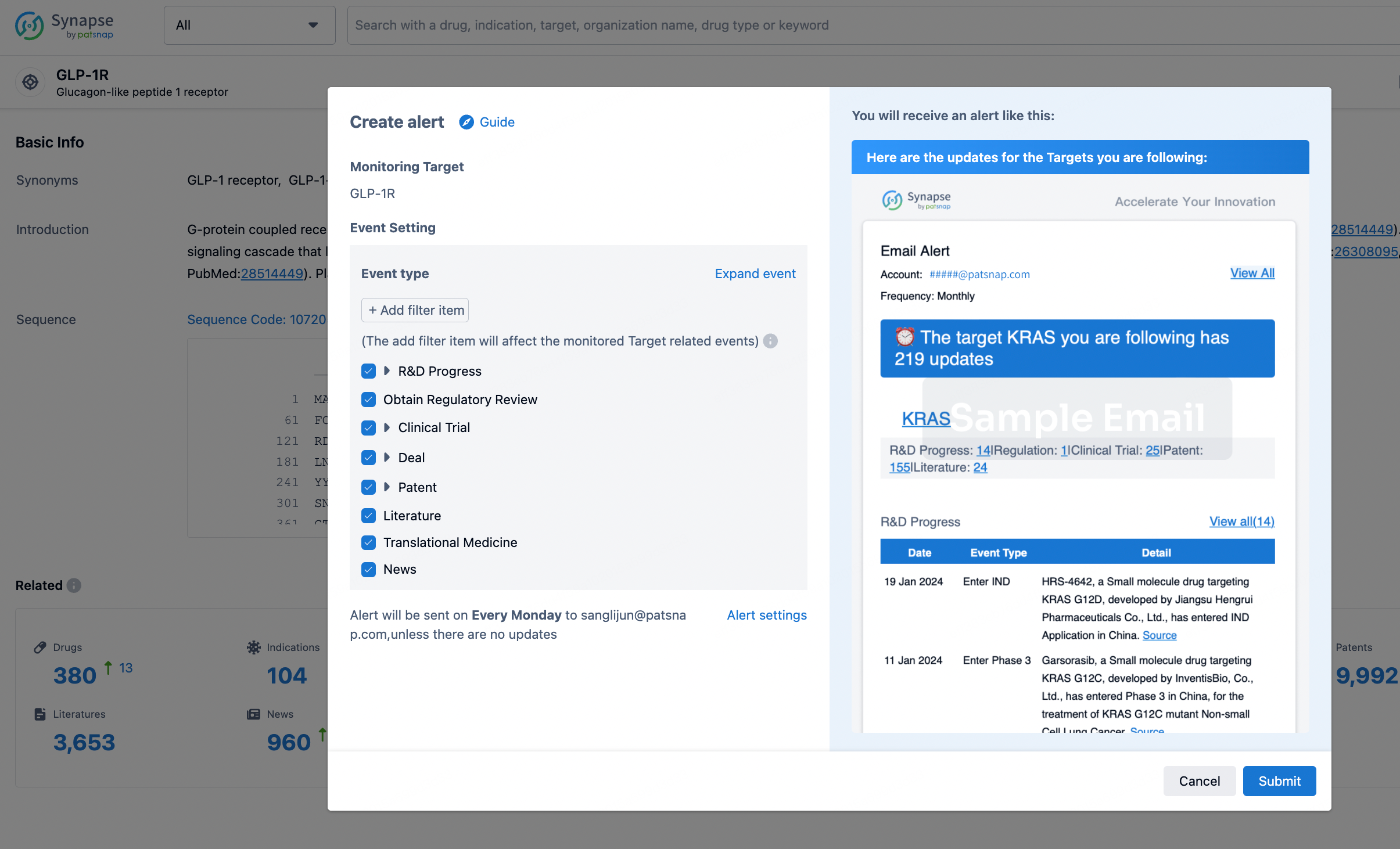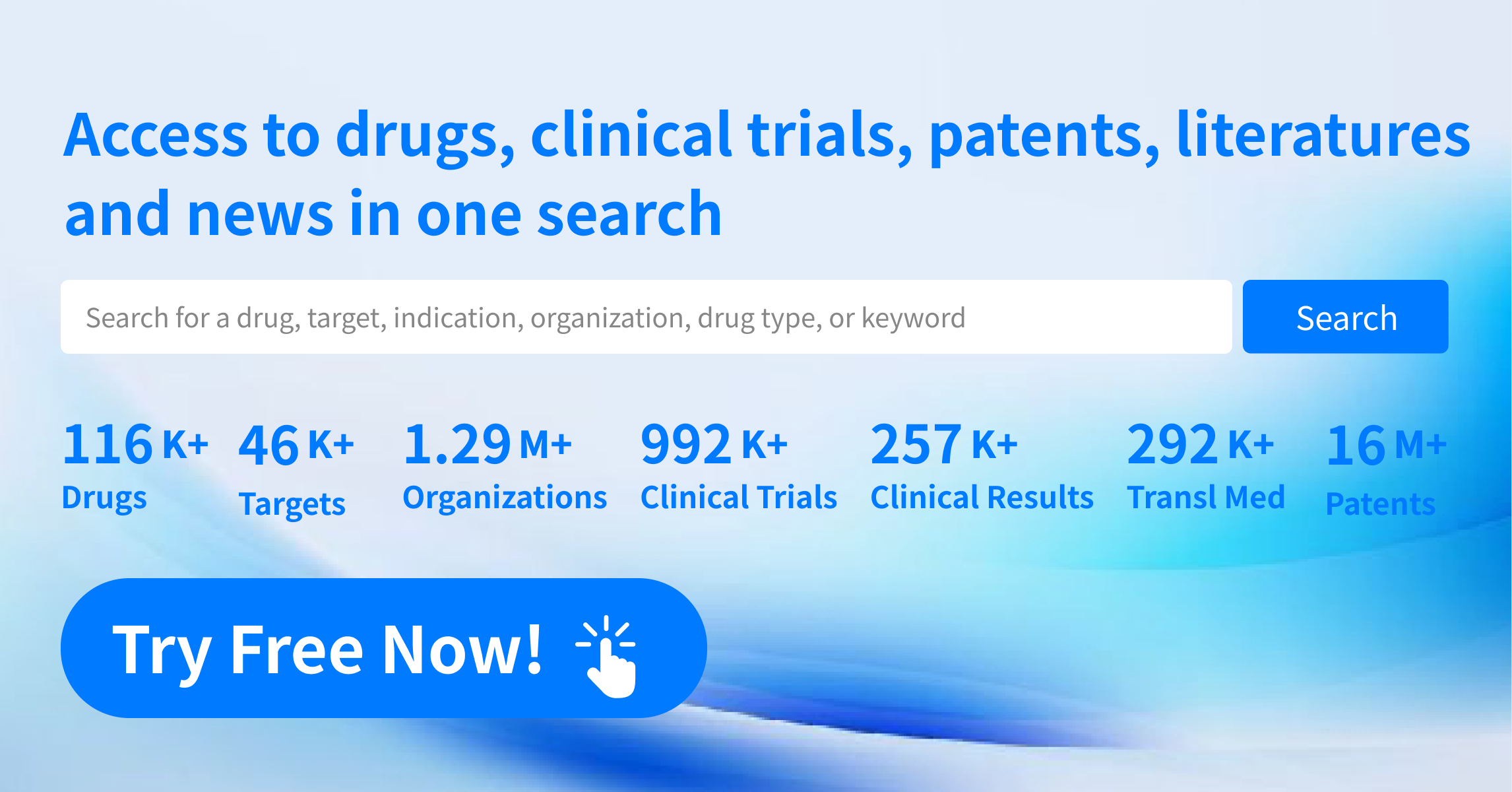Request Demo
What are GLUT-4 stimulants and how do they work?
25 June 2024
In today's health-conscious society, understanding the mechanisms of glucose metabolism and insulin sensitivity is crucial for managing and preventing metabolic disorders. One such mechanism involves GLUT-4, a glucose transporter protein. GLUT-4 stimulants are compounds or actions that promote the activity of this protein, thereby improving glucose uptake by cells, especially in muscle and fat tissues. This blog post will delve into the workings of GLUT-4 stimulants, their mechanisms, and their practical applications in health and disease management.
GLUT-4, or glucose transporter type 4, is an insulin-regulated glucose transporter found primarily in adipose tissues and skeletal muscles. When insulin binds to its receptors on the cell surface, it triggers a cascade of events that lead to the translocation of GLUT-4 from intracellular compartments to the cell membrane. Once at the membrane, GLUT-4 facilitates the uptake of glucose from the bloodstream into the cell, where it can be used for energy production or stored for later use. This process is vital for maintaining normal blood sugar levels and overall metabolic health.
GLUT-4 stimulants enhance the efficiency of this glucose uptake mechanism. They can be broadly classified into two categories: pharmacological agents and lifestyle interventions. Pharmacological agents include medications such as metformin and thiazolidinediones, which are commonly used in the treatment of type 2 diabetes. These drugs work by increasing insulin sensitivity, thereby promoting the translocation of GLUT-4 to the cell membrane. On the other hand, lifestyle interventions include physical exercise and dietary modifications. Regular physical activity is one of the most potent natural stimulants of GLUT-4 translocation. During exercise, muscle contractions independently stimulate GLUT-4 translocation, improving glucose uptake even in the absence of insulin.
The primary use of GLUT-4 stimulants is in the management of diabetes, particularly type 2 diabetes. Type 2 diabetes is characterized by insulin resistance, where cells become less responsive to insulin, leading to elevated blood sugar levels. By enhancing GLUT-4 activity, these stimulants help to lower blood glucose levels, thereby managing and mitigating the symptoms of diabetes. For instance, metformin reduces hepatic glucose production and increases insulin sensitivity, facilitating greater glucose uptake by cells. Similarly, thiazolidinediones improve insulin sensitivity by acting on the PPAR-gamma receptors, which play a role in glucose and lipid metabolism.
Beyond diabetes management, GLUT-4 stimulants also have applications in weight management and overall metabolic health. Given that insulin resistance and obesity often go hand in hand, improving GLUT-4 activity can aid in weight loss and maintenance by enhancing the body's ability to use glucose efficiently. Regular physical activity, a natural GLUT-4 stimulant, not only improves glucose uptake but also boosts overall metabolic rate, contributing to weight loss and reduced risk of metabolic syndrome.
Moreover, emerging research suggests that GLUT-4 stimulants could have potential applications in the prevention of cardiovascular diseases. Insulin resistance is a known risk factor for cardiovascular diseases, and enhancing GLUT-4 activity can improve cardiovascular health by maintaining better blood sugar control and reducing the risk of atherosclerosis. Improved glucose metabolism also means less oxidative stress and inflammation, which are critical factors in the development of cardiovascular diseases.
In conclusion, GLUT-4 stimulants play a vital role in enhancing glucose metabolism and insulin sensitivity. They are invaluable tools in the management of type 2 diabetes, weight control, and overall metabolic health. Whether through pharmacological agents or lifestyle modifications, promoting GLUT-4 activity can lead to significant health benefits, including improved glucose control, weight loss, and reduced risk of cardiovascular diseases. As research continues to uncover new insights into the role of GLUT-4 in metabolic health, the potential applications of these stimulants are likely to expand, offering new avenues for disease prevention and health optimization.
GLUT-4, or glucose transporter type 4, is an insulin-regulated glucose transporter found primarily in adipose tissues and skeletal muscles. When insulin binds to its receptors on the cell surface, it triggers a cascade of events that lead to the translocation of GLUT-4 from intracellular compartments to the cell membrane. Once at the membrane, GLUT-4 facilitates the uptake of glucose from the bloodstream into the cell, where it can be used for energy production or stored for later use. This process is vital for maintaining normal blood sugar levels and overall metabolic health.
GLUT-4 stimulants enhance the efficiency of this glucose uptake mechanism. They can be broadly classified into two categories: pharmacological agents and lifestyle interventions. Pharmacological agents include medications such as metformin and thiazolidinediones, which are commonly used in the treatment of type 2 diabetes. These drugs work by increasing insulin sensitivity, thereby promoting the translocation of GLUT-4 to the cell membrane. On the other hand, lifestyle interventions include physical exercise and dietary modifications. Regular physical activity is one of the most potent natural stimulants of GLUT-4 translocation. During exercise, muscle contractions independently stimulate GLUT-4 translocation, improving glucose uptake even in the absence of insulin.
The primary use of GLUT-4 stimulants is in the management of diabetes, particularly type 2 diabetes. Type 2 diabetes is characterized by insulin resistance, where cells become less responsive to insulin, leading to elevated blood sugar levels. By enhancing GLUT-4 activity, these stimulants help to lower blood glucose levels, thereby managing and mitigating the symptoms of diabetes. For instance, metformin reduces hepatic glucose production and increases insulin sensitivity, facilitating greater glucose uptake by cells. Similarly, thiazolidinediones improve insulin sensitivity by acting on the PPAR-gamma receptors, which play a role in glucose and lipid metabolism.
Beyond diabetes management, GLUT-4 stimulants also have applications in weight management and overall metabolic health. Given that insulin resistance and obesity often go hand in hand, improving GLUT-4 activity can aid in weight loss and maintenance by enhancing the body's ability to use glucose efficiently. Regular physical activity, a natural GLUT-4 stimulant, not only improves glucose uptake but also boosts overall metabolic rate, contributing to weight loss and reduced risk of metabolic syndrome.
Moreover, emerging research suggests that GLUT-4 stimulants could have potential applications in the prevention of cardiovascular diseases. Insulin resistance is a known risk factor for cardiovascular diseases, and enhancing GLUT-4 activity can improve cardiovascular health by maintaining better blood sugar control and reducing the risk of atherosclerosis. Improved glucose metabolism also means less oxidative stress and inflammation, which are critical factors in the development of cardiovascular diseases.
In conclusion, GLUT-4 stimulants play a vital role in enhancing glucose metabolism and insulin sensitivity. They are invaluable tools in the management of type 2 diabetes, weight control, and overall metabolic health. Whether through pharmacological agents or lifestyle modifications, promoting GLUT-4 activity can lead to significant health benefits, including improved glucose control, weight loss, and reduced risk of cardiovascular diseases. As research continues to uncover new insights into the role of GLUT-4 in metabolic health, the potential applications of these stimulants are likely to expand, offering new avenues for disease prevention and health optimization.
How to obtain the latest development progress of all targets?
In the Synapse database, you can stay updated on the latest research and development advances of all targets. This service is accessible anytime and anywhere, with updates available daily or weekly. Use the "Set Alert" function to stay informed. Click on the image below to embark on a brand new journey of drug discovery!
AI Agents Built for Biopharma Breakthroughs
Accelerate discovery. Empower decisions. Transform outcomes.
Get started for free today!
Accelerate Strategic R&D decision making with Synapse, PatSnap’s AI-powered Connected Innovation Intelligence Platform Built for Life Sciences Professionals.
Start your data trial now!
Synapse data is also accessible to external entities via APIs or data packages. Empower better decisions with the latest in pharmaceutical intelligence.


